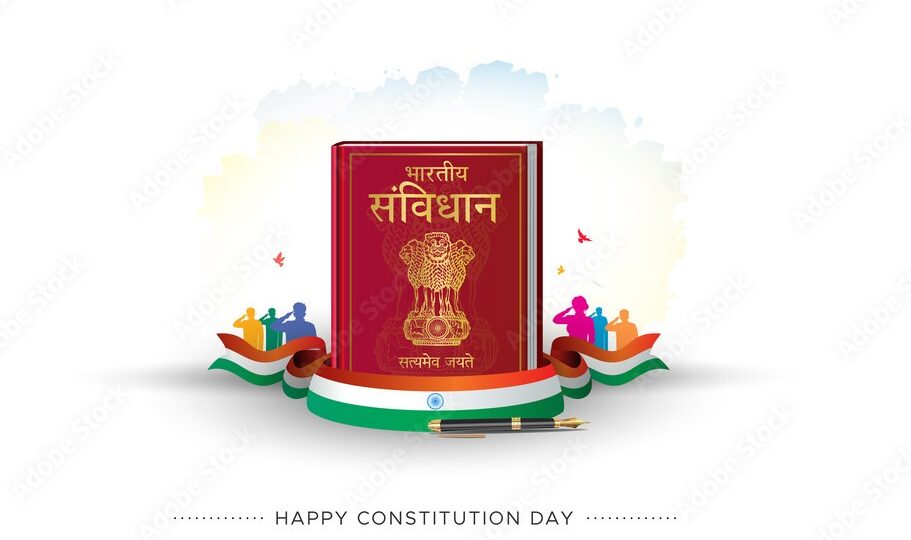On 26 November 2025, India marked a major step toward deepening democratic participation with the release of digital editions of the Constitution in nine regional languages. This landmark initiative, widely recognized under the theme “Indian Constitution in regional languages 2025,” aims to ensure that every citizen — regardless of linguistic background — can understand, engage with, and appreciate the country’s foundational legal document. Launched during the 76th Constitution Day celebration and formally released by President Droupadi Murmu, the initiative reflects a strong push toward linguistic inclusion and civic empowerment.
Why the 2025 Initiative Matters
India is home to extraordinary linguistic diversity, with dozens of major languages and hundreds of dialects spoken across its states. Yet for decades, access to the Constitution — the document defining rights, duties, principles, and protections — has not been equally available to all. Many communities have had limited exposure to the text because it was not available in the languages they speak every day. The 2025 effort directly addresses this barrier.
By providing the Constitution in new regional languages, the government aims to make constitutional literacy more widespread, allowing more citizens to understand the laws that govern their lives. This initiative strengthens participatory democracy and ensures that constitutional values reach every linguistic community.
Nine Regional Languages Added in 2025
As part of the Indian Constitution in regional languages 2025 initiative, the following languages received updated and formally released digital editions:
- Assamese
- Bodo (first-ever official edition)
- Kashmiri (first-ever official edition)
- Malayalam
- Marathi
- Nepali
- Odia
- Punjabi
- Telugu
Among these, the Bodo and Kashmiri translations carry special significance. For these communities, the release is more than a formal translation — it is recognition, representation, and integration. For the first time, speakers of these languages can read the Constitution in words that feel familiar, natural, and culturally connected.
Strengthening Democratic Accessibility
Bringing the Constitution Closer to the People
Language can be a powerful bridge — or a barrier. When key national documents are available only in a few languages, millions of citizens may feel disconnected. Translating the Constitution into regional languages removes this barrier, enabling citizens to understand their fundamental rights, constitutional protections, and the principles that guide governance in India.
This expanded access fosters civic literacy, encourages participation in public life, and strengthens the democratic fabric at the grassroots level. Whether a student in Assam, a community leader in Kashmir, or a family in rural Odisha — everyone gains the ability to read, question, and engage with the Constitution.
Empowering Citizens Through Knowledge
The initiative also helps expand access to legal understanding. Knowing the Constitution means knowing one’s rights — from equality and freedom of expression to educational protections and social justice provisions. It allows individuals to hold institutions accountable, fight discrimination, and demand governance that reflects constitutional values. When citizens understand the law, they are better equipped to challenge injustice and participate in shaping their communities.
A Look Back at Linguistic Representation in the Constitution
The Constitution recognizes 22 scheduled languages under the Eighth Schedule. Yet not all of these had official translations available in modern, accessible digital formats. Historically, the Constitution existed mainly in English and Hindi versions. While partial translations were available for some languages, consistent digital editions were lacking.
The 2025 initiative marks an important step toward bridging this gap — creating an India where constitutional literacy is equally accessible to Assamese readers, Bodo speakers, Kashmiri households, and citizens across all major linguistic communities.
Why “Indian Constitution in Regional Languages 2025” Is a Transformative Step
- Promotes linguistic equality: No language group should feel excluded from democratic processes.
- Builds national unity: Recognizing regional languages strengthens India’s cultural fabric.
- Boosts civic awareness: More citizens gain access to essential knowledge about rights and duties.
- Supports education: Schools, colleges, and competitive exam aspirants benefit from regional-language versions.
- Encourages participation: When people understand the law, they participate more actively in governance.
Challenges That Lie Ahead
While the initiative is historic, several challenges remain:
- Translation accuracy: Maintaining the integrity of constitutional vocabulary across languages is a complex task involving legal and linguistic experts.
- Awareness and outreach: Citizens must know these versions exist and have easy access to them.
- Remaining languages: Not all scheduled languages received updates in 2025; several still await translations.
- Digital literacy: Accessing digital editions requires basic digital literacy, which varies across regions.
Despite these challenges, the initiative lays strong groundwork for a more linguistically inclusive democracy — urging governments, educators, and communities to continue the momentum.
The Road Ahead for Linguistic Inclusion
The future of constitutional literacy in India depends on expanding this initiative further. To truly accomplish the goals of Indian Constitution in regional languages 2025, the following steps will be essential:
- Translating the Constitution into all 22 scheduled languages.
- Creating awareness campaigns to promote these versions.
- Integrating regional-language Constitutions into educational curricula.
- Ensuring updated translations reflect amendments and legal changes.
- Making printed versions available alongside digital editions.
When constitutional understanding becomes accessible to all — regardless of language — democracy becomes stronger, more inclusive, and more participatory.
Frequently Asked Questions (FAQs)
Q: What does “Indian Constitution in regional languages 2025” refer to?
A: It refers to the 2025 initiative by the Indian government to release digital editions of the Constitution in nine regional languages, making the document more accessible to diverse linguistic communities.
Q: Which languages were added in 2025?
A: Assamese, Bodo, Kashmiri, Malayalam, Marathi, Nepali, Odia, Punjabi, and Telugu.
Q: Why are Bodo and Kashmiri translations significant?
A: These are the first-ever official translations of the Constitution in Bodo and Kashmiri, giving these linguistic communities long-awaited recognition and accessibility.
Q: How does this initiative help citizens?
A: It improves access to constitutional rights and duties, strengthens legal awareness, and promotes inclusive democratic participation.
Q: Will more language translations be added?
A: Yes. The long-term goal is to publish updated versions in all 22 scheduled languages to ensure full linguistic inclusion across India.




